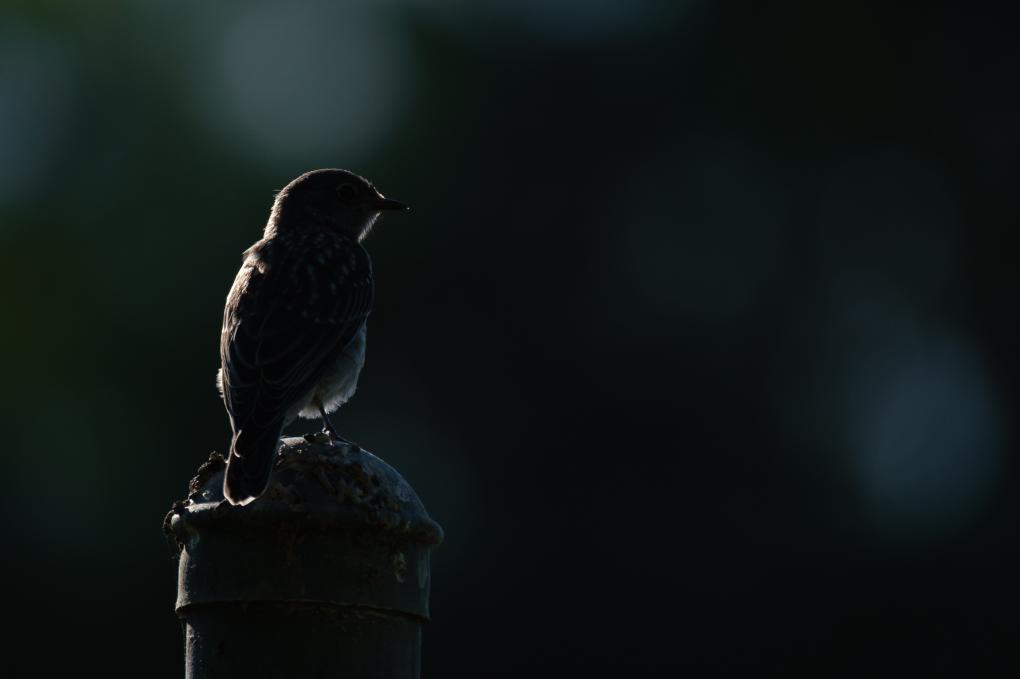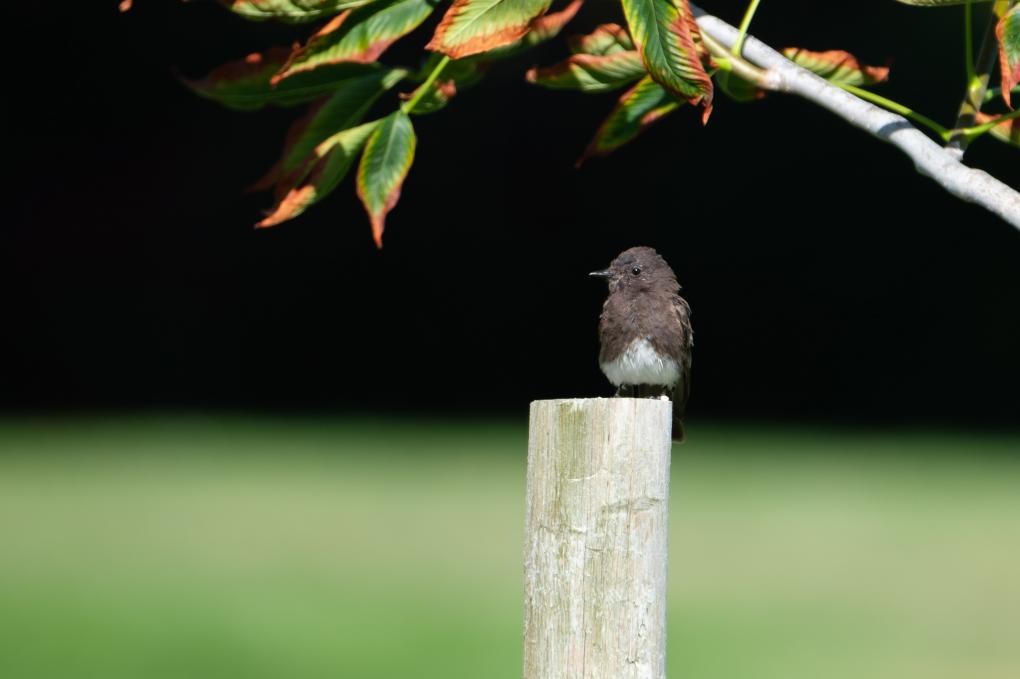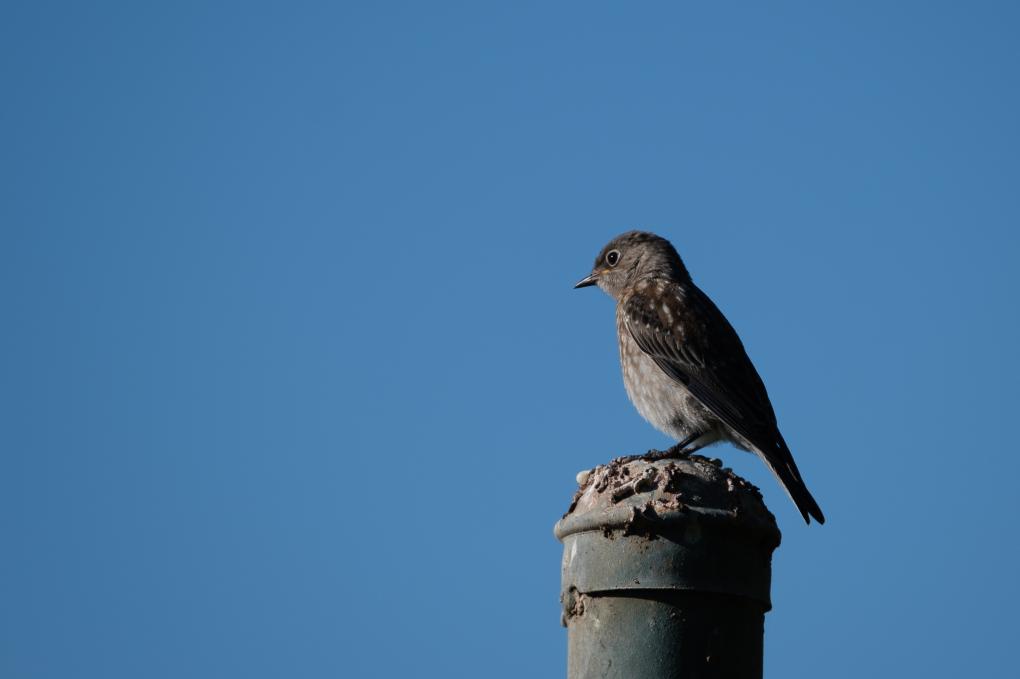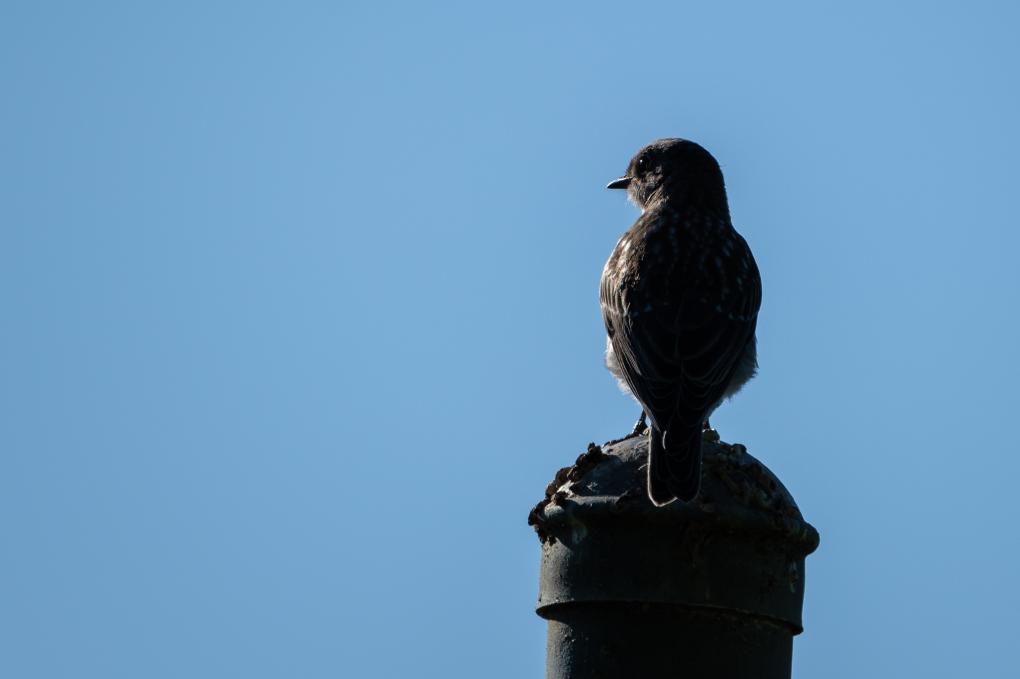The Cornell Lab Bird Academy › Discussion Groups › Bird Photography with Melissa Groo › Practice Crafting Great Bird Photos
-
 This image is with a super-telephoto at max zoom, 1/500th, ISO 250, f6.3. I find the sinuous neck pose quite visually compelling. The original image is about 9000x6000, with crisp feather detail that is lost with this downsampled upload.
This image is with a super-telephoto at max zoom, 1/500th, ISO 250, f6.3. I find the sinuous neck pose quite visually compelling. The original image is about 9000x6000, with crisp feather detail that is lost with this downsampled upload. -
Has anyone used a Field Scope instead of a telescopic lens? It is supposed to attach to a camera and an I-phone using adapters.
-


 I took all three of these photos at the leather stocking trail in NY and especially like the Golden crowned kinglet, because of how close I got to the bird, with only a 250mm zoom lens! The thrush is also one of my favorite because it is following the rule of thirds.
I took all three of these photos at the leather stocking trail in NY and especially like the Golden crowned kinglet, because of how close I got to the bird, with only a 250mm zoom lens! The thrush is also one of my favorite because it is following the rule of thirds. -


 For this assignment I really concentrated on using my manual settings while trying to get the "classic" bird photo using the rule of 3rds. For the Song Sparrow I really liked how the branch in the foreground as well as the background were blurred while the bird itself was still in focus. I spent a lot of time with this female Ruby-throated Hummingbird as she darted back and forth from the feeder to this tree and like how she's wrapped around the tiny branch. I love how the Gray Catbird really stands out from the creamy green background.
For this assignment I really concentrated on using my manual settings while trying to get the "classic" bird photo using the rule of 3rds. For the Song Sparrow I really liked how the branch in the foreground as well as the background were blurred while the bird itself was still in focus. I spent a lot of time with this female Ruby-throated Hummingbird as she darted back and forth from the feeder to this tree and like how she's wrapped around the tiny branch. I love how the Gray Catbird really stands out from the creamy green background. -
Hummingbird photo is great! Seeing them land and stay a second is fantastic to photo!
-
-
 A wide open aperture and high speed created a nicely blurred background while the dew is still visible on the morning grass. Brewers blackbird
A wide open aperture and high speed created a nicely blurred background while the dew is still visible on the morning grass. Brewers blackbird -

 I took these Rufous Hummingbird photos with side lighting. I especially like the way that the fascia frame the bird.
I took these Rufous Hummingbird photos with side lighting. I especially like the way that the fascia frame the bird. -


 The top photo of a yellow-crowned heron (I think) is backlighting following the rule of thirds. The middle photo of the Tree Swallow is side lighting and follows through rule of thirds. Finally, Snowy Egret is front lighting.
The top photo of a yellow-crowned heron (I think) is backlighting following the rule of thirds. The middle photo of the Tree Swallow is side lighting and follows through rule of thirds. Finally, Snowy Egret is front lighting. -
Melissa's photo on the side-lit Eastern Towhee: Why did you shoot at F/7.1 instead of keeping it wide open and dropping down the ISO? Wouldn't that have created a better quality image (less noise from higher ISO)? I was just curious because I always try to shoot wide open unless I want to increase depth of field to capture multiple birds or for maybe a habitat shot.
-
I spent a long time (45 minutes) trying to capture the spirit of this Black Phoebe - this is the only photo of many that follows the "rules". I also was getting used to my Canon Powershoot HD50SX so there were some technical issues. But by using large aperture , I love the shallow depth of the field and how it highlights the bird. The Snow Egret violates the rule of thirds but it still isn't a bad picture!


-
Used the Rule of Thirds in the first picture and in the last picture of the Canada Goose I broke the Rule of Thirds and the Goose is right in the middle of the picture. I really like both pictures, so I could go with using the Rule of Thirds but also breaking it when necessary. The middle picture of the Canada Goose is showing shallow depth of field when I was playing around with my aperture settings. Loved the assignment.



-
Looks like the goose loved working with you, nice sharp photos and approaches to the shot.
-
-
While I lived in Florida for some time, I've never been able to capture decent images of Osprey...until one appeared in my backyard to munch on a tasty fish caught from our lake. During the photo encounter a Bald Eagle and Hawk circled the Osprey watching for an opportunity to swoop down and steal the fish. But the Osprey would not have it and spread its wings around the fish to hide it from any aerial attacks. Both images are using the rule of thirds.


-
Wow! That is such beautiful close ups. Amazing photos.
-
@Isabelle Thanks so much Isabelle! It was truly a magical encounter.
-
I am in awe of these photos! Amazing. I see osprey in my area, but they are always high up in the trees. wow!
-
When I lived in Maine, I once saw an osprey dive and come up with a fish. Immediately an eagle was on it, trying to get it to drop the fish. Watched through binoculars for a few minutes until the eagle gave up. Apparently, they're pretty lazy.
-
Great shot, sharp, exposure , blurred background etc. great moment for you to have caught.
-
Love the eyes in the first photo...intensity caught!
-
-
Dickcissel with backlighting
 Barn swallow with subject in focus and background blurred
Barn swallow with subject in focus and background blurred
 Bald eagle side lighting
Bald eagle side lighting

-
Great images and really cool to see the different types of lighting.
-
That Dickcissel photo is just gorgeous! Bravo!
-
-
I live in the desert so there isn't much in the way of sit spots or car-blind birding. I went to different locations for each photo. For the common bee eater (bottom) I placed the nest hole in the upper right-hand 1/3 of the photo and photographed the bird as it exited. There is a lot of space in front of the bird, to move into. The white spectacled bulbul (middle) was in my bird-bath and I broke the rules by putting it dead center, but I wanted to show motion. I aimed low (belly-water interface) and got that in focus (F 5.7) and took a medium slow shutter speed of 1/125 of a second. Finally I broke the rules with the pale rock finch but was so happy that I got water drops on its face/throat. I probably should have moved it to the left 1/3 of the photo and had more of the water in front of it, to the right.



-

 I worked with the rule of thirds in both these images. The first, common yellowthroat, and the second, sandhill crane photos were taken on an overcast day so the lighting was not as dramatic. I was more focused on exposure-light meter to prevent them from being too dark.
I worked with the rule of thirds in both these images. The first, common yellowthroat, and the second, sandhill crane photos were taken on an overcast day so the lighting was not as dramatic. I was more focused on exposure-light meter to prevent them from being too dark. -
I love how the painted bunting came out crisp but the leaves in the foreground and background are blurred almost creating a frame. This doesn't follow the rule of thirds bit the blurred edges draw the focus to the bird.

-
Such a beautiful image, Lucy. I love how the colour of the background accentuates the birds colours as well as that really effective blurring.
-
Excellent use of selective focus and aperture, Lucy! Beautiful color contrast as well.
-
I really like this photo. It shows the colour features of the bird. It would have been better if there was no obstructing object. However, on the other hand, I think it also shows how well the bird tries to ambush itself.
-
Really captured the colors beautifully!
-
-
Well, these were shots that were done wrong. First the Chipping Sparrow had harsh noon sun overhead but it lit up his hair do. The Red-winged Blackbird had both the fore ground and back ground in focus, The House Finch was in the rain, no sun. I took the shot out of my sun room window. I still liked some aspect of each of these even though they don't go by the book.



-
I really like the house finch photo because you can see the bird is wet and the small streaks of rain.
-
The house Finch is fabulous! I love the composition, the atmosphere, the rain and its expression! Bravo!
-
Lovely photo! Loved the finch. Just a small note: would have been better if the limbs had not been cut :)
-
I really like all three photos. They are all artfully done, even the shadows. Sometimes I like to see some shadowing because it looks more natural, the way we see the bird in nature most of the time. The house finch is especially lovely with the water droplets and perfectly focused. I hope to take photos like this some day!
-
-
Plain ole house sparrow with side lighting. That really makes the feather texture pop.

 Sorry this isn't a bird-but I used spot metering on this mink's face like Melissa did on the crow to get his eyes, plus backlighting to highlight his fur. It's really hot here today and the birds just weren't out! I'm learning to change my metering mode to accommodate different situations.
Sorry this isn't a bird-but I used spot metering on this mink's face like Melissa did on the crow to get his eyes, plus backlighting to highlight his fur. It's really hot here today and the birds just weren't out! I'm learning to change my metering mode to accommodate different situations. -
Such a cool photo! The bird (sparrow sized?) looks as large as the mink! Perhaps because of the background compression from using your telephoto lens. An interesting effect. Thanks for sharing it! :)
-
-


 The Dove is following the rules I think! The Cattle Egret doesn’t but we wanted to include the Bull with it. Not sure where the Killdeer fits in but liked the shot!
The Dove is following the rules I think! The Cattle Egret doesn’t but we wanted to include the Bull with it. Not sure where the Killdeer fits in but liked the shot! -
These are all nice. I would move the one with the bull over so that even more of the bull is showing and the birds is on the far left hand side-the look on the birds face is special as he's looking at the bull. :-)
-
@Elizabeth Agree Elizabeth! Thanks for the comment!
-
The rule of thirds is a new concept to me. It makes a lot of sense but I always centered the bird. That is the one big thing I learned in this course and I really like how you positioned the dove in this photo. I think it looks better than had you centered it.
-
Sharp focus on that killdeer as they are usually running around...nice work!
-
-
Th

-
Don't know where my text went. Male Western Towhee, back lighting with shadow. This is a wrong use of composition-he needs more room to look into.
-
-
Sometimes I'm just happy if I can get a photo of a bird that is all in the frame, exposed correctly and in focus! But I must say the lighting makes all the difference to the end result and really makes that bird 'shine'! Here are my offerings. Side lighting, rule of three and a slightly different rule of three just to make you smile. Hopefully! 😊



-
Yes, that last use of thirds did make me smile. What is the bird in second photo? Nice shots.
-
@Elizabeth Hi Elizabeth The second image is a female superb fairy-wren. Here's a photo of the male. Found in the south and south east of Australia. Cheers Carole

-
Really like the softness of the side light on the first as well as the beautiful bokeh. Great to see.
-
Love the lighting on photo one with its softness. Yes, photo 3 did bring a smile, thanks!
-
-
Photo is more interesting when using rule of 3rd's. The creamy background makes the main element stand out. I left the leaves on the right side to balance out the image.
 I took this photo at 1/1250, f/6.3 with ISO 500. I also touched it up a bit in Lightroom.
I took this photo at 1/1250, f/6.3 with ISO 500. I also touched it up a bit in Lightroom. -
Great photo!
-
Glad you kept the heart-shaped leaf in the photo!
-
-


 The picture of the American Oystercatcher, taken on my day trip pilgrimage to Cape May yesterday, follows the rule of thirds. The background is blurred in the Red-Tailed Hawk picture. For the Bald Eagle (taken on July 4th!), I broke the rule of thirds. The angle of the bird flying away, and the lack of anything but blue sky beyond it, made it look better to me this way. Fun fact, the Eagle and the Hawk (wasn’t that a John Denver song) were taken only 12 minutes apart, both using the car as a blind, sort of. The Eagle was too far away to care about me. I saw the hawk perched on a wire as I drove home from where I’d just seen the Eagle. The road was very lightly traveled at the time, so I was able to turn around, go back, stop underneath, and take the picture through the sunroof.
The picture of the American Oystercatcher, taken on my day trip pilgrimage to Cape May yesterday, follows the rule of thirds. The background is blurred in the Red-Tailed Hawk picture. For the Bald Eagle (taken on July 4th!), I broke the rule of thirds. The angle of the bird flying away, and the lack of anything but blue sky beyond it, made it look better to me this way. Fun fact, the Eagle and the Hawk (wasn’t that a John Denver song) were taken only 12 minutes apart, both using the car as a blind, sort of. The Eagle was too far away to care about me. I saw the hawk perched on a wire as I drove home from where I’d just seen the Eagle. The road was very lightly traveled at the time, so I was able to turn around, go back, stop underneath, and take the picture through the sunroof. -
Oystercatcher with food, very cool photo!
-
-
 This is a photo in which I think I broke some of the rules. The photo of the Secretary Bird is taken with the negative space behind the bird rather than (the traditional) in front of the bird. I did this to emphasize the Secretary Bird's rearward facing plumes.
This is a photo in which I think I broke some of the rules. The photo of the Secretary Bird is taken with the negative space behind the bird rather than (the traditional) in front of the bird. I did this to emphasize the Secretary Bird's rearward facing plumes.
 I think this Bee Eater photo is more in line with usual bird portrait rules, creamy background, rule of thirds. There is no catchlight in the eye but the iris is clear and evenly lit.
I think this Bee Eater photo is more in line with usual bird portrait rules, creamy background, rule of thirds. There is no catchlight in the eye but the iris is clear and evenly lit. -
In the first photo, it looks like a wide aperture was indeed used producing a blurred background not exactly creamy. I would have placed the bird looking into the blank space, not away from it. The second photo has a nice creamy background, just what we want. Furthermore the bird is off-centered, using the rule of 3rd's and the photo is balanced with the branch on the left.
-
@Gary Thanks for the feedback, Gary! :-)
-
What great birds-I'm loving seeing the birds from around the world. Your break the rules photo makes me want to scoot it over a bit so it is looking into the void-know you did this on purpose to emphasize the plumes. Second one has nice composition-thanks for sharing these birds with us. Libby
-
@Elizabeth Thanks Libby, for your feedback! :) Here's another birds of the world photo - a Kori Bustard. I have a few more on my instagram page if you are interested. It is the same name as my username.

-
-
Here is the same backlit photo of the juvenile western bluebird against a darker background. On the last two photos with the black phoebes (there is a juvenile and its mom). I tried to work on the composition and and trying (rule of 1/3.)



-
Nice comparisons of how light angle changes things!
-
@Elizabeth Thank you Elizabeth!
-
Love the top image! Beautiful rim light and excellent example of the rule of thirds.
-
@Fred Thank you Fred!
-
You caught the lighting nicely in all three photos. Wow!
-
-
I went to my local public park to experiment with what Melissa taught in this lesson. I first put all the settings Melissa recommended on my camera and then tried to find birds and photograph them in different light, and background, paying particular attention to the fact that their eye was lit and there was nothing in the background. I decided to go full manual and see what I could come up with. I was very pleased with the results and I can't wait to experiment again. Here are 3 views of the same juvenile western bluebird - front light, side light and back light (same background - blue sky).



-
Each shot so different with the light, Isabelle. Great! I must get more adventurous and use manual. You've encouraged me!
-
@Carole I know, it was the first time I tried, I am going to experiment more too :) Looking forward to seeing your experimentations.
-
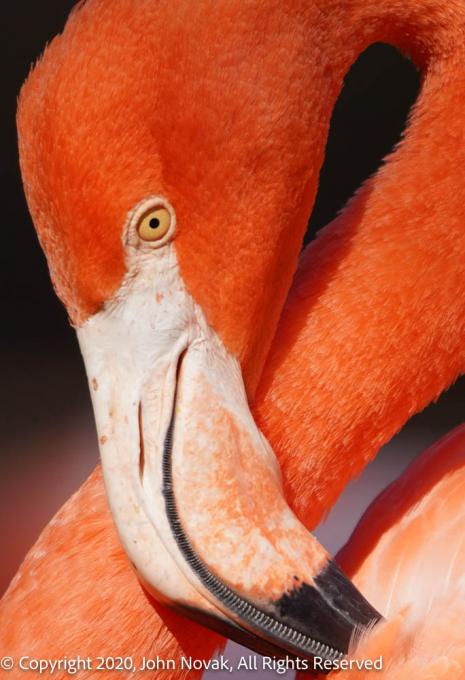 This image is with a super-telephoto at max zoom, 1/500th, ISO 250, f6.3. I find the sinuous neck pose quite visually compelling. The original image is about 9000x6000, with crisp feather detail that is lost with this downsampled upload.
This image is with a super-telephoto at max zoom, 1/500th, ISO 250, f6.3. I find the sinuous neck pose quite visually compelling. The original image is about 9000x6000, with crisp feather detail that is lost with this downsampled upload. 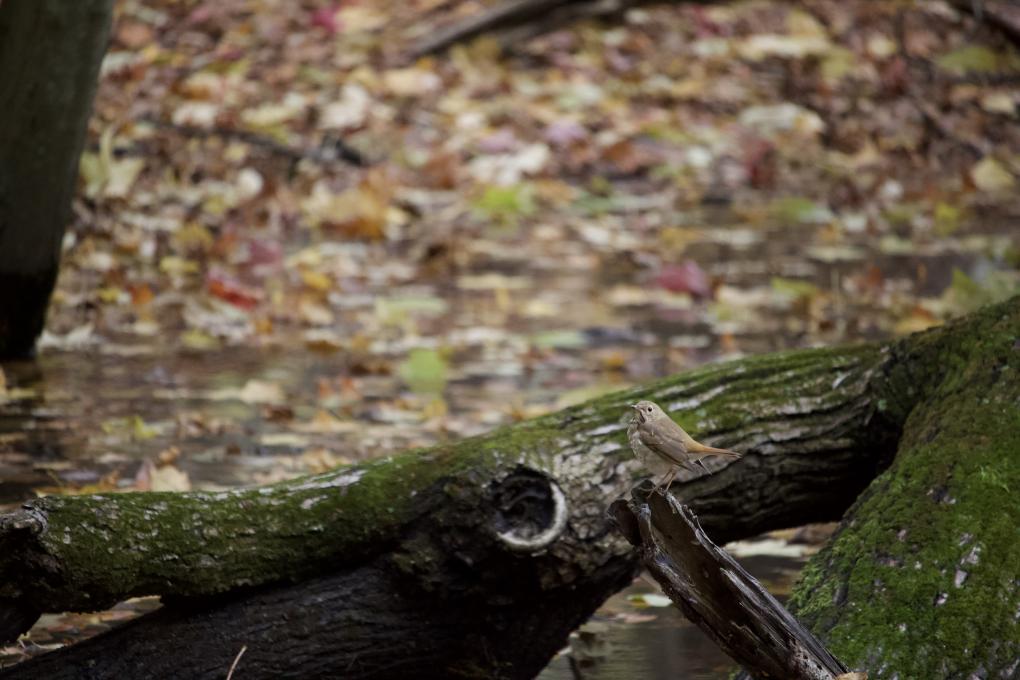
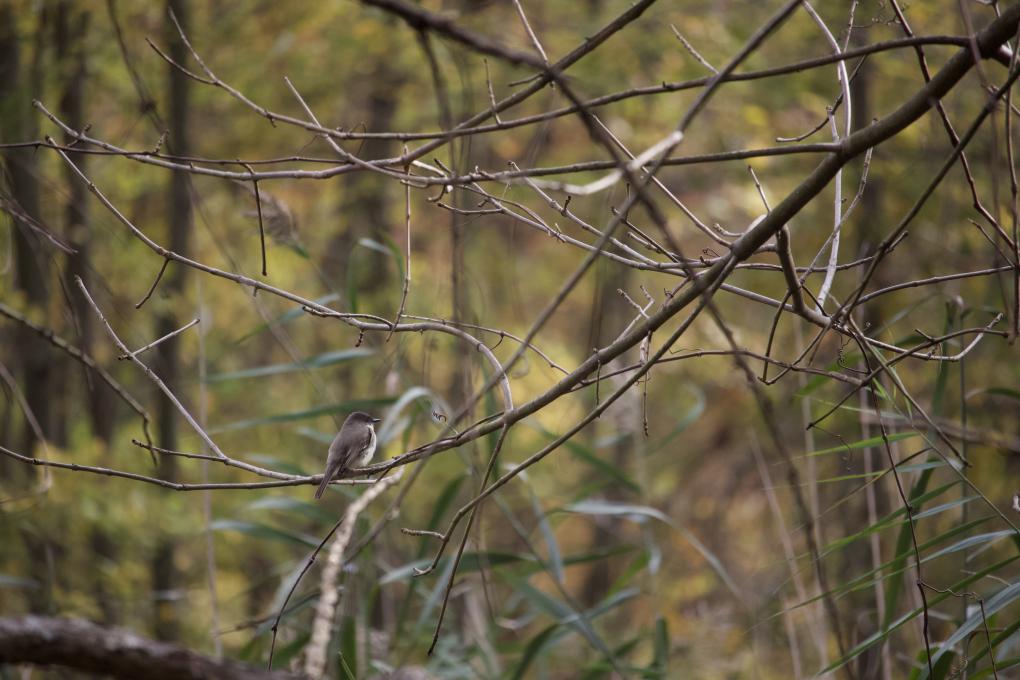
 I took all three of these photos at the leather stocking trail in NY and especially like the Golden crowned kinglet, because of how close I got to the bird, with only a 250mm zoom lens! The thrush is also one of my favorite because it is following the rule of thirds.
I took all three of these photos at the leather stocking trail in NY and especially like the Golden crowned kinglet, because of how close I got to the bird, with only a 250mm zoom lens! The thrush is also one of my favorite because it is following the rule of thirds. 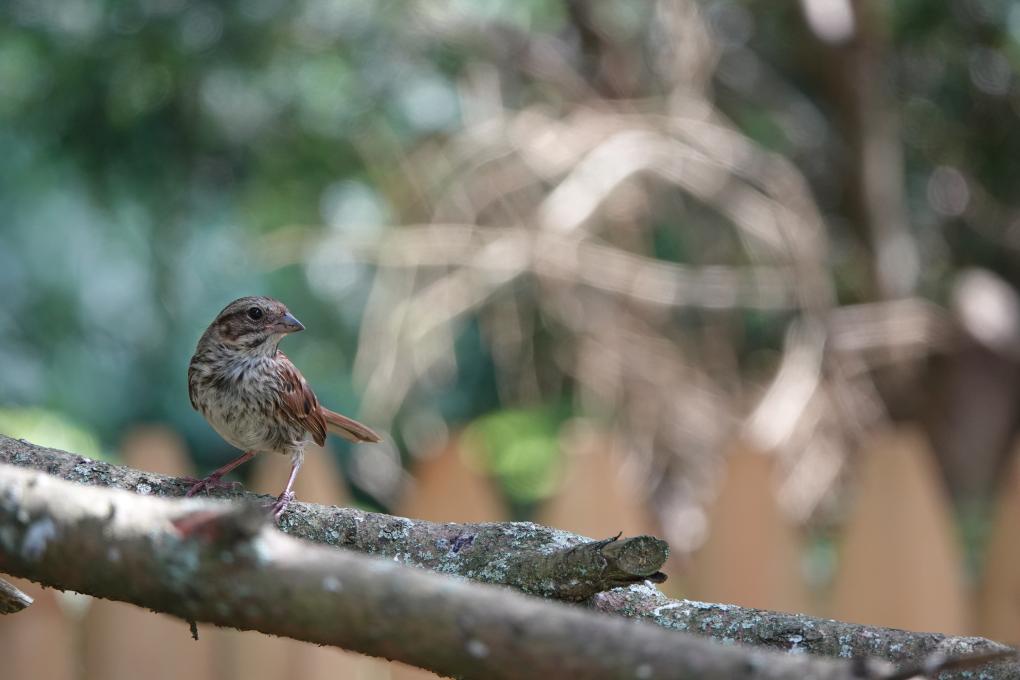
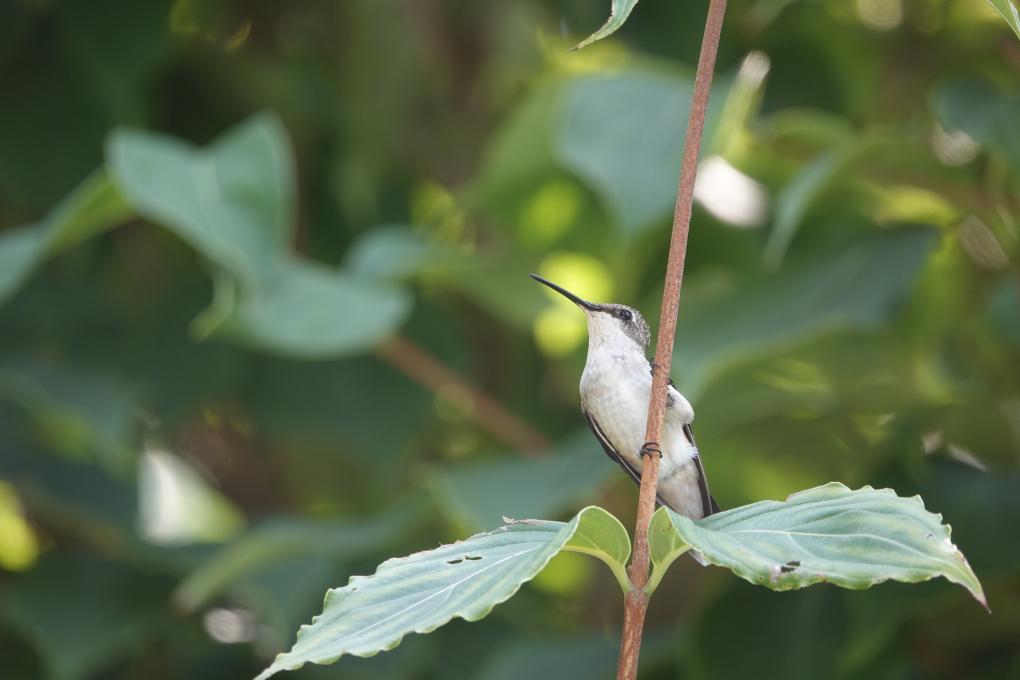
 For this assignment I really concentrated on using my manual settings while trying to get the "classic" bird photo using the rule of 3rds. For the Song Sparrow I really liked how the branch in the foreground as well as the background were blurred while the bird itself was still in focus. I spent a lot of time with this female Ruby-throated Hummingbird as she darted back and forth from the feeder to this tree and like how she's wrapped around the tiny branch. I love how the Gray Catbird really stands out from the creamy green background.
For this assignment I really concentrated on using my manual settings while trying to get the "classic" bird photo using the rule of 3rds. For the Song Sparrow I really liked how the branch in the foreground as well as the background were blurred while the bird itself was still in focus. I spent a lot of time with this female Ruby-throated Hummingbird as she darted back and forth from the feeder to this tree and like how she's wrapped around the tiny branch. I love how the Gray Catbird really stands out from the creamy green background. 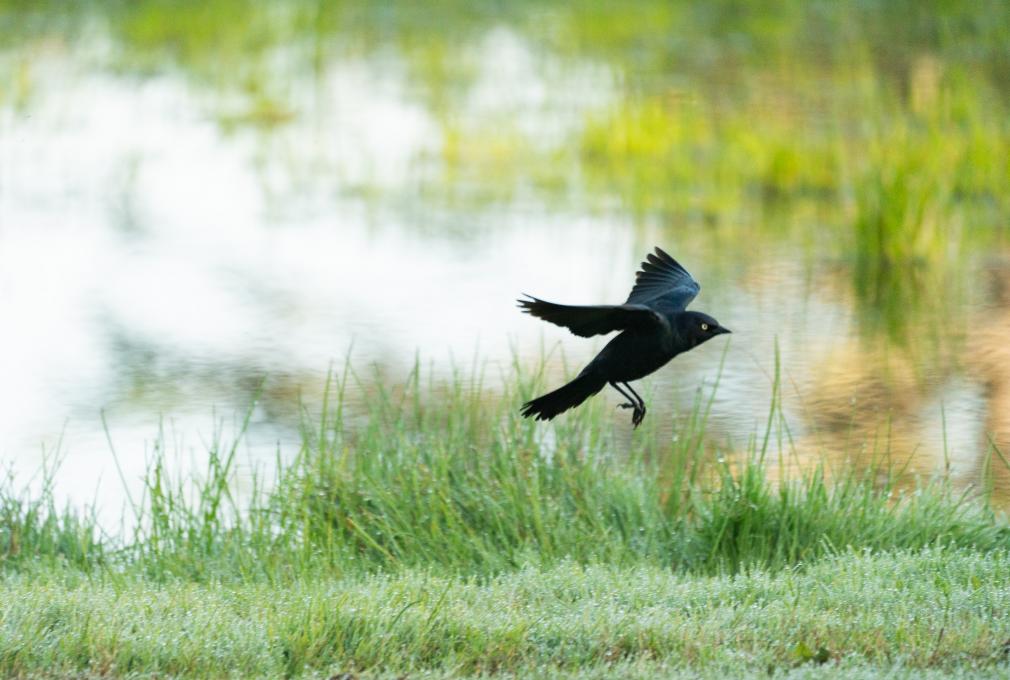 A wide open aperture and high speed created a nicely blurred background while the dew is still visible on the morning grass. Brewers blackbird
A wide open aperture and high speed created a nicely blurred background while the dew is still visible on the morning grass. Brewers blackbird 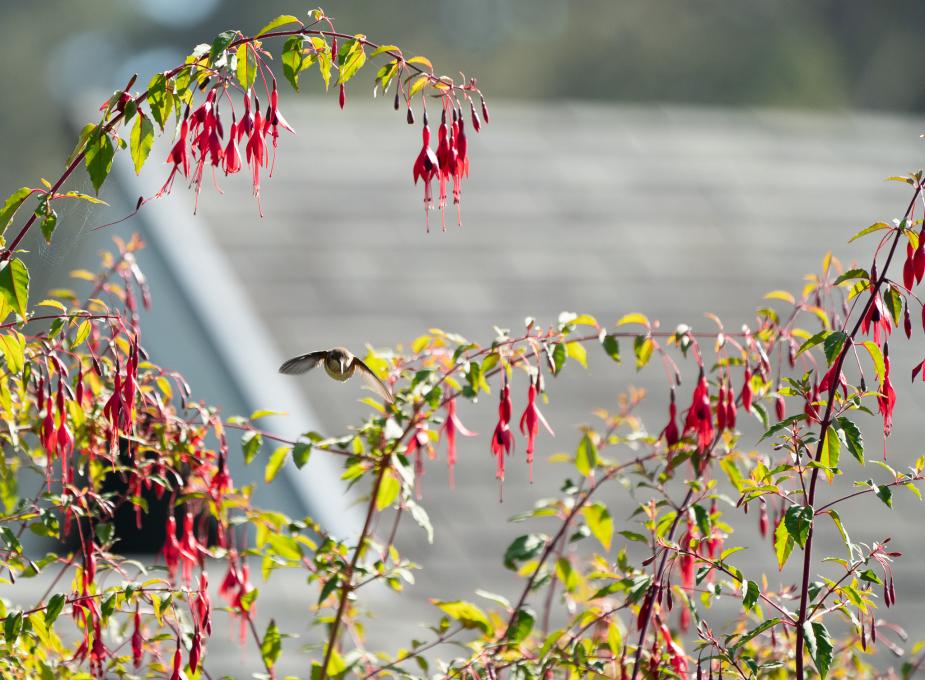
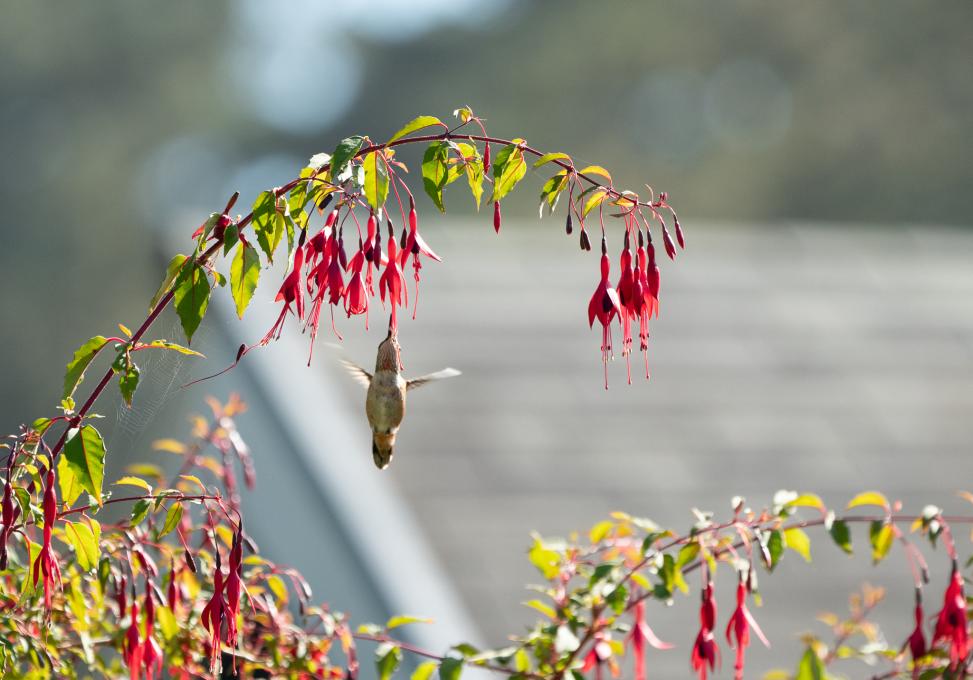 I took these Rufous Hummingbird photos with side lighting. I especially like the way that the fascia frame the bird.
I took these Rufous Hummingbird photos with side lighting. I especially like the way that the fascia frame the bird. 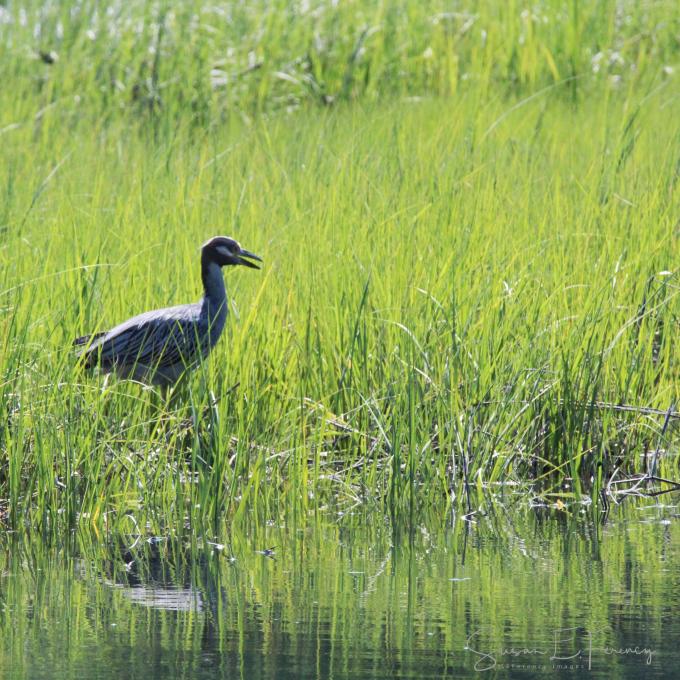
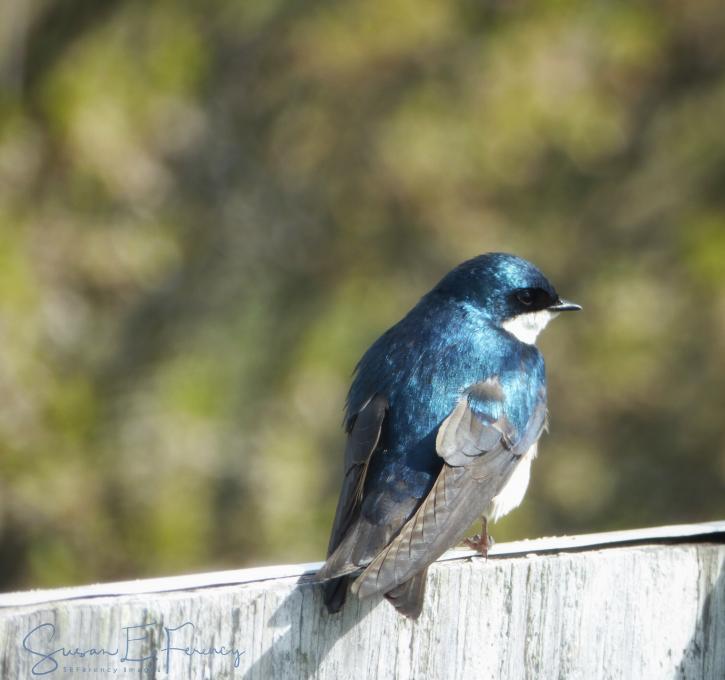
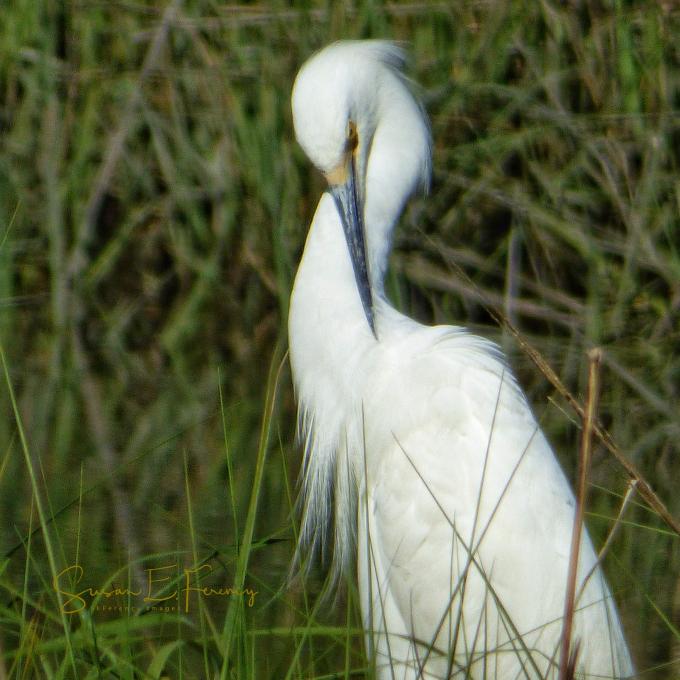 The top photo of a yellow-crowned heron (I think) is backlighting following the rule of thirds. The middle photo of the Tree Swallow is side lighting and follows through rule of thirds. Finally, Snowy Egret is front lighting.
The top photo of a yellow-crowned heron (I think) is backlighting following the rule of thirds. The middle photo of the Tree Swallow is side lighting and follows through rule of thirds. Finally, Snowy Egret is front lighting. 
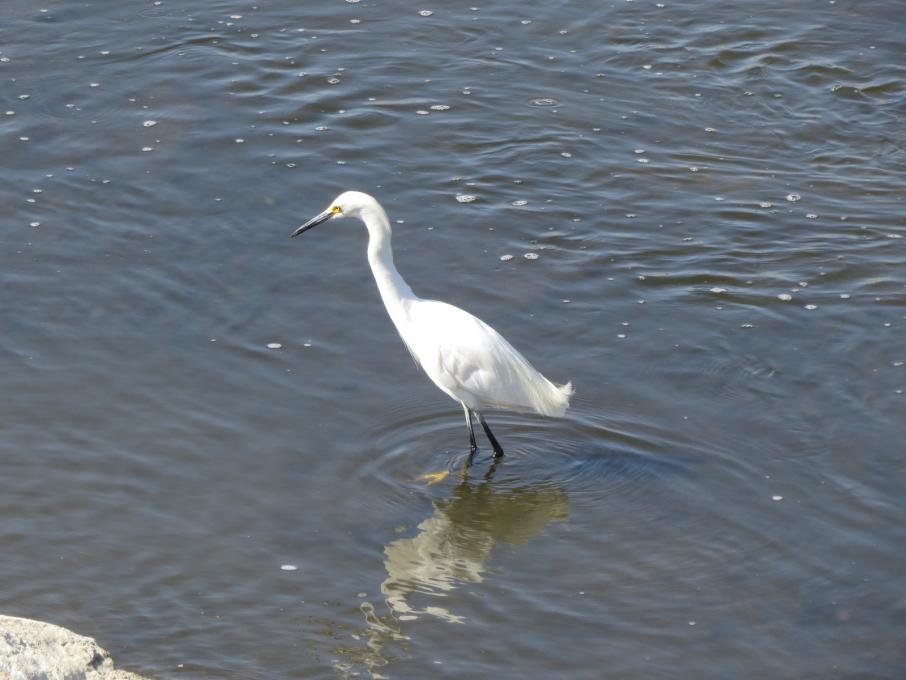

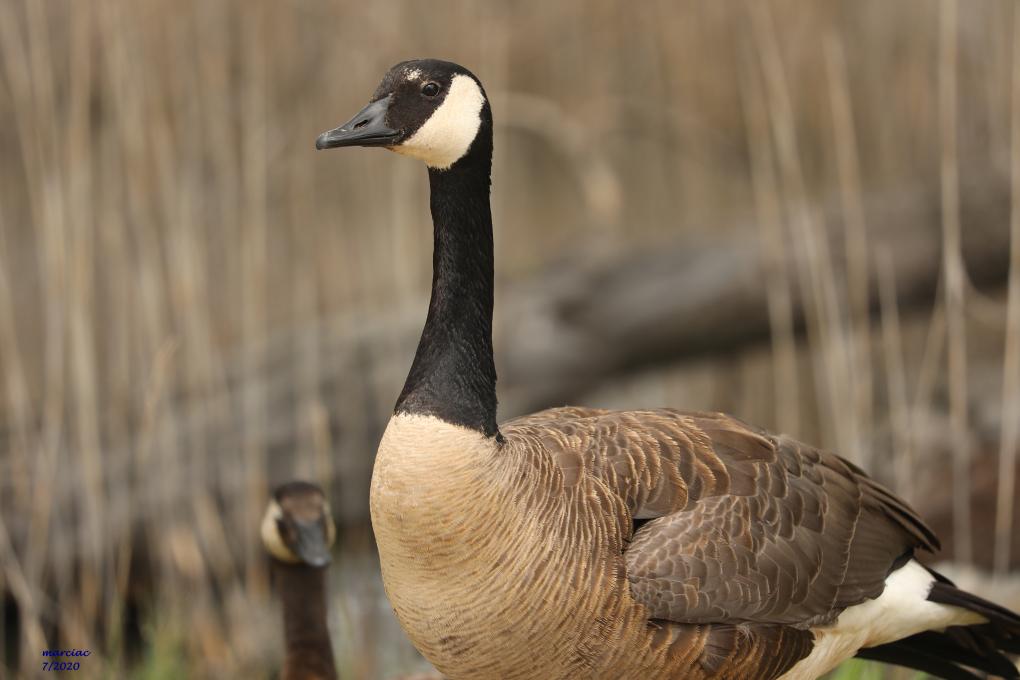

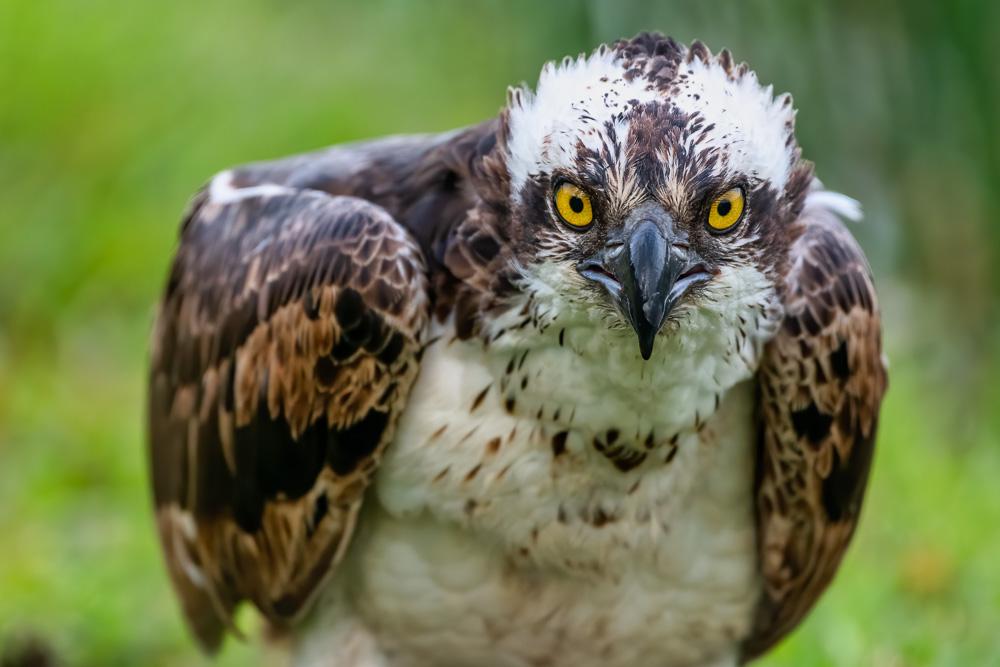
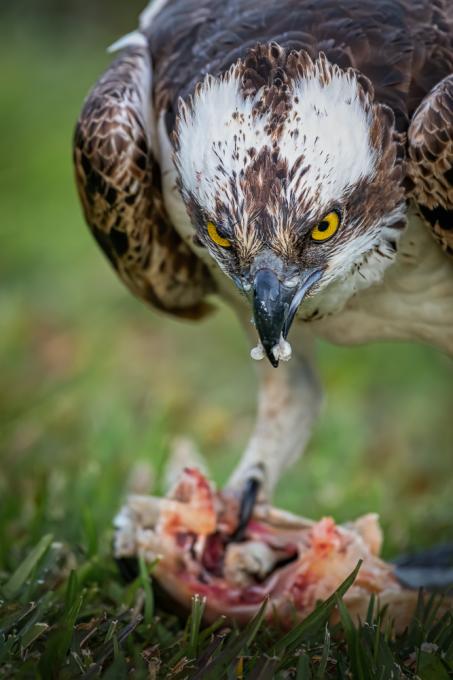
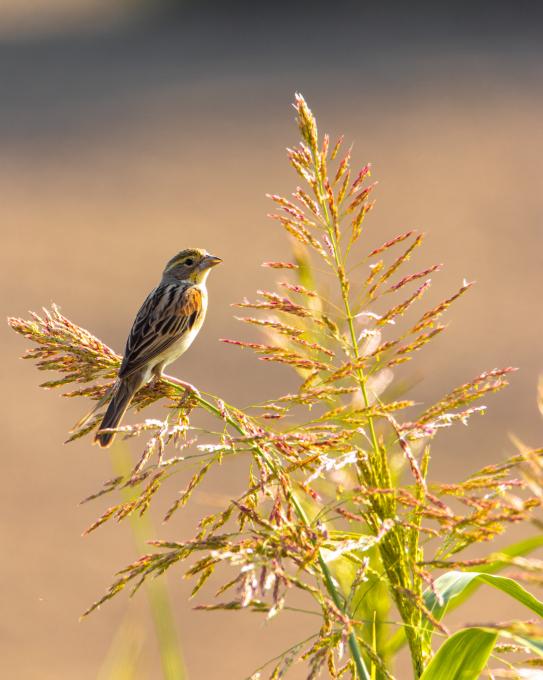 Barn swallow with subject in focus and background blurred
Barn swallow with subject in focus and background blurred
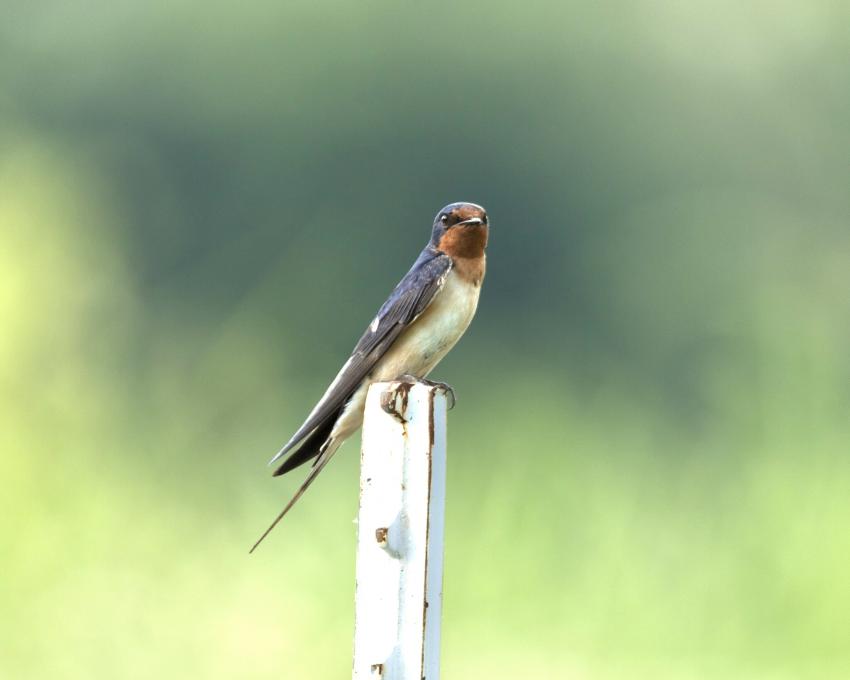 Bald eagle side lighting
Bald eagle side lighting
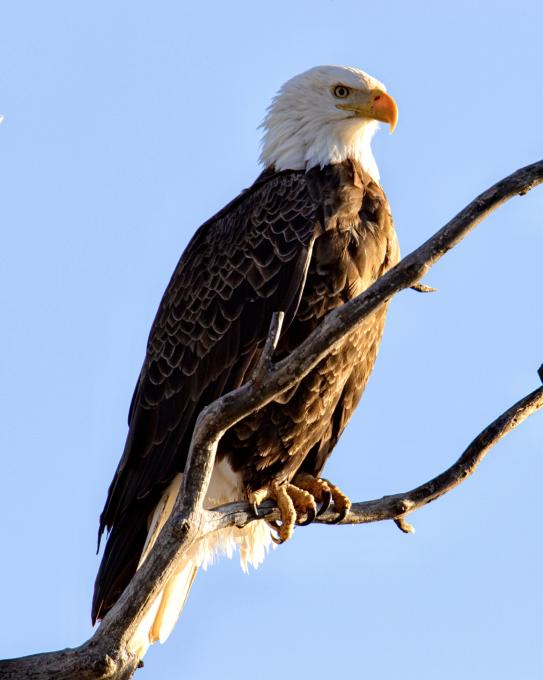


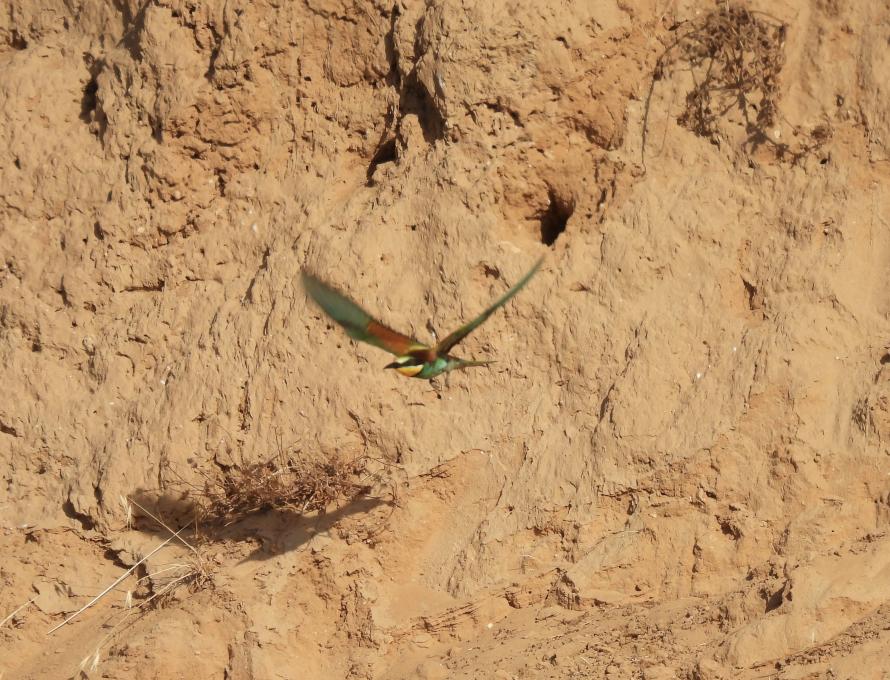

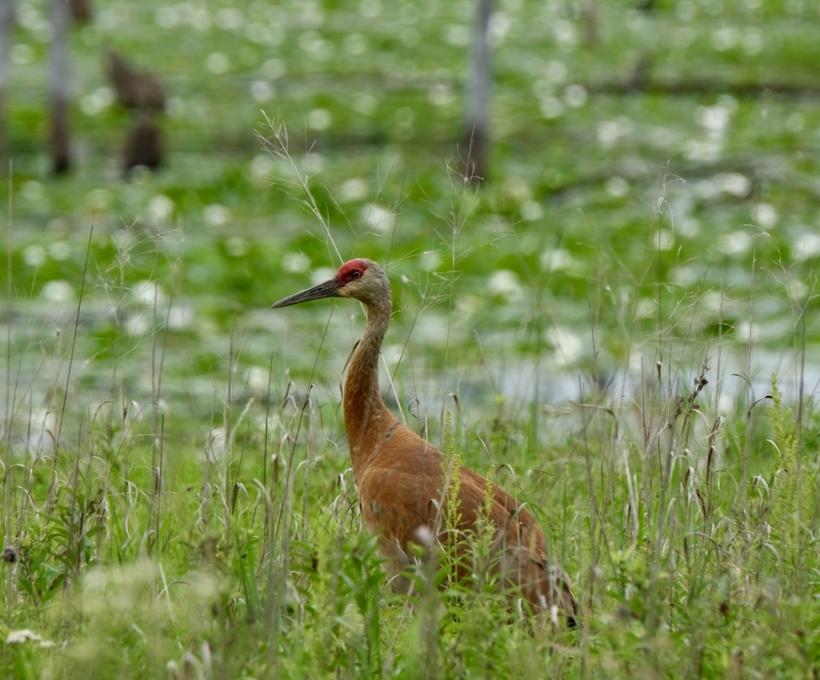 I worked with the rule of thirds in both these images. The first, common yellowthroat, and the second, sandhill crane photos were taken on an overcast day so the lighting was not as dramatic. I was more focused on exposure-light meter to prevent them from being too dark.
I worked with the rule of thirds in both these images. The first, common yellowthroat, and the second, sandhill crane photos were taken on an overcast day so the lighting was not as dramatic. I was more focused on exposure-light meter to prevent them from being too dark. 
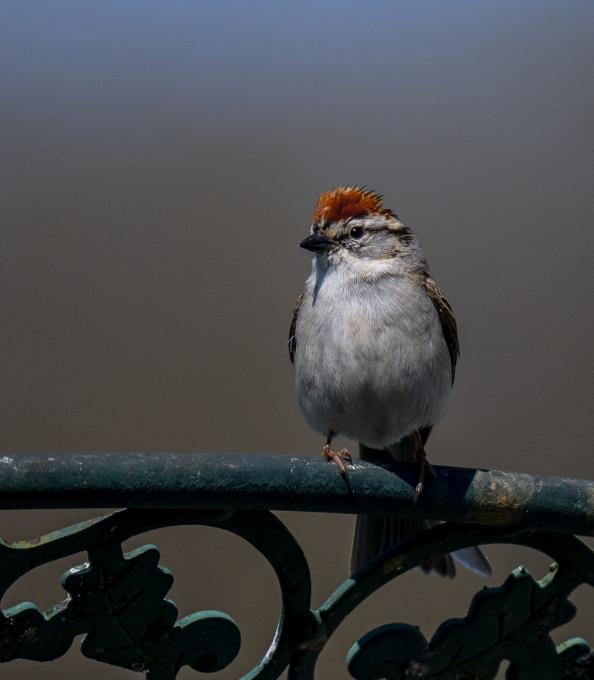

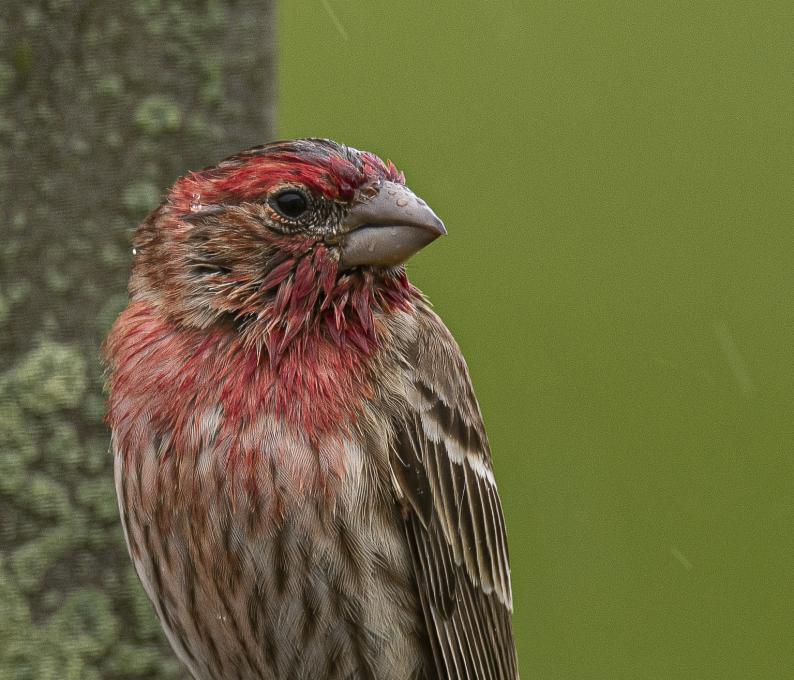
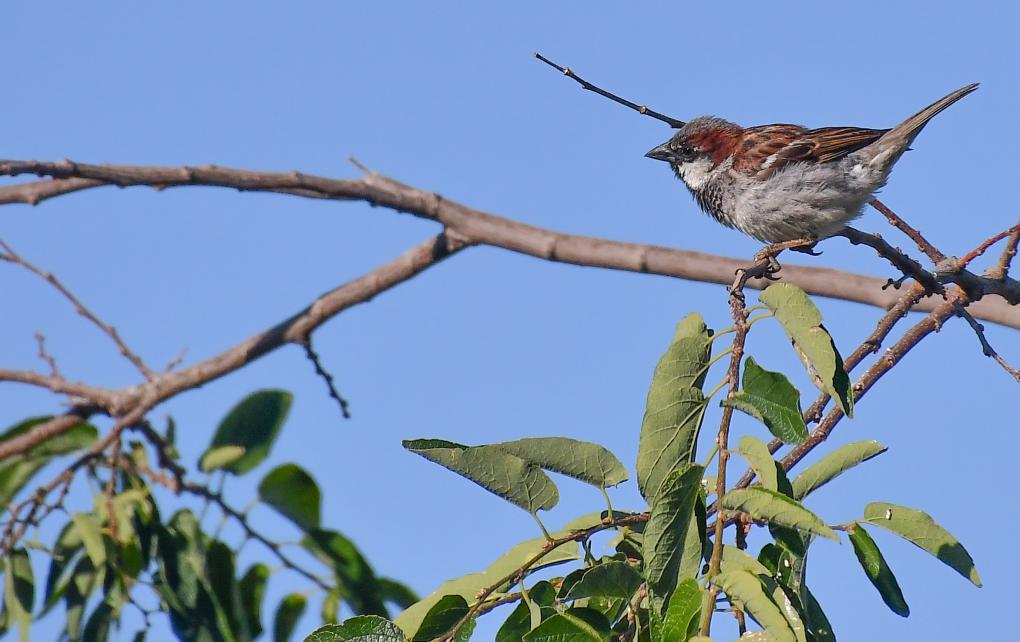
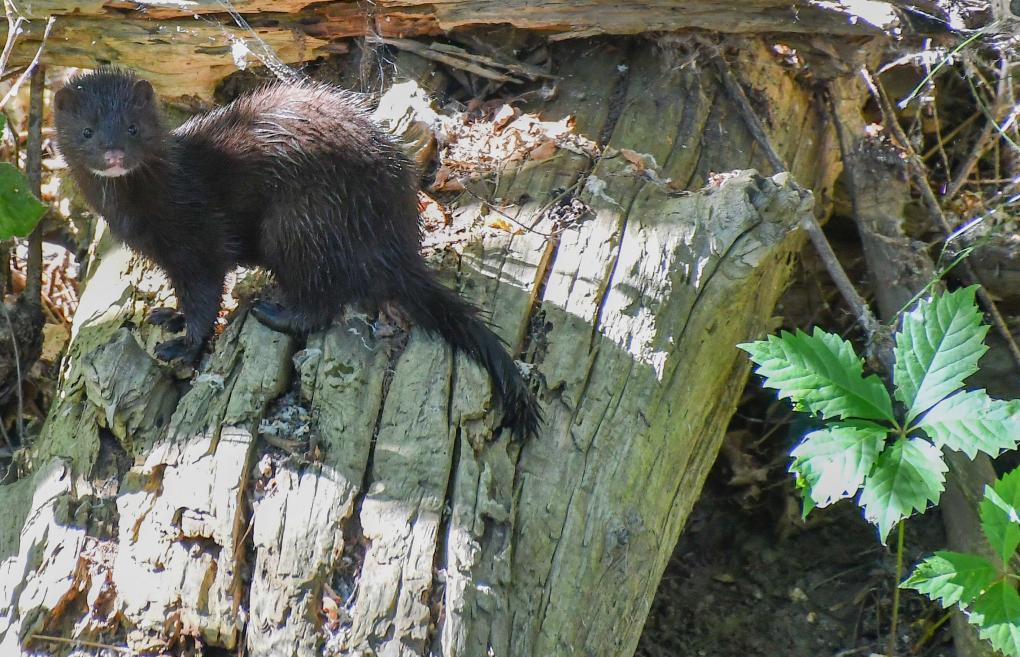 Sorry this isn't a bird-but I used spot metering on this mink's face like Melissa did on the crow to get his eyes, plus backlighting to highlight his fur. It's really hot here today and the birds just weren't out! I'm learning to change my metering mode to accommodate different situations.
Sorry this isn't a bird-but I used spot metering on this mink's face like Melissa did on the crow to get his eyes, plus backlighting to highlight his fur. It's really hot here today and the birds just weren't out! I'm learning to change my metering mode to accommodate different situations. 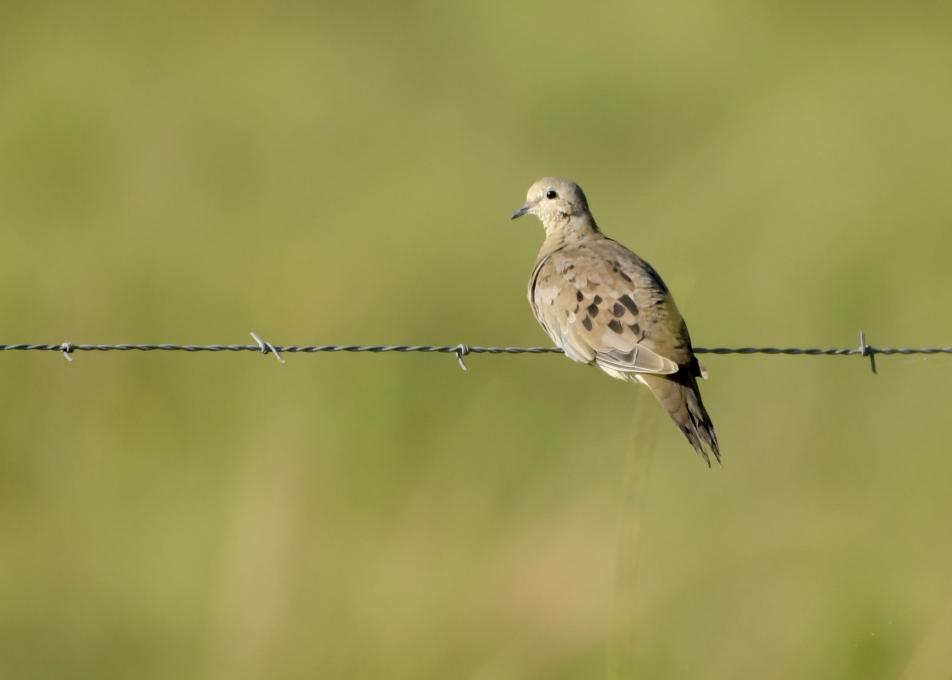

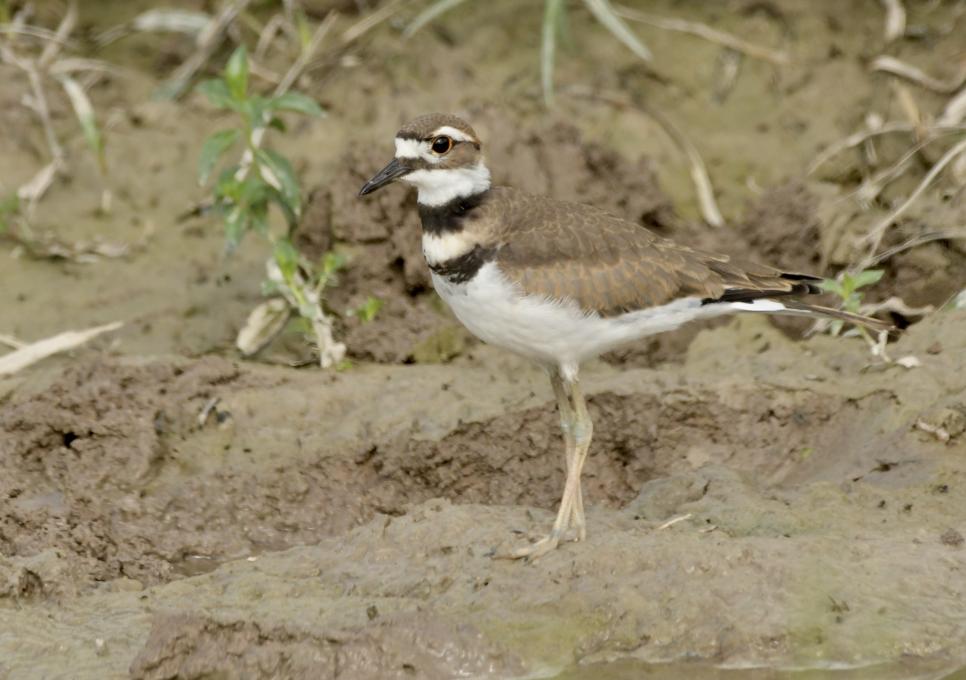 The Dove is following the rules I think! The Cattle Egret doesn’t but we wanted to include the Bull with it. Not sure where the Killdeer fits in but liked the shot!
The Dove is following the rules I think! The Cattle Egret doesn’t but we wanted to include the Bull with it. Not sure where the Killdeer fits in but liked the shot! 
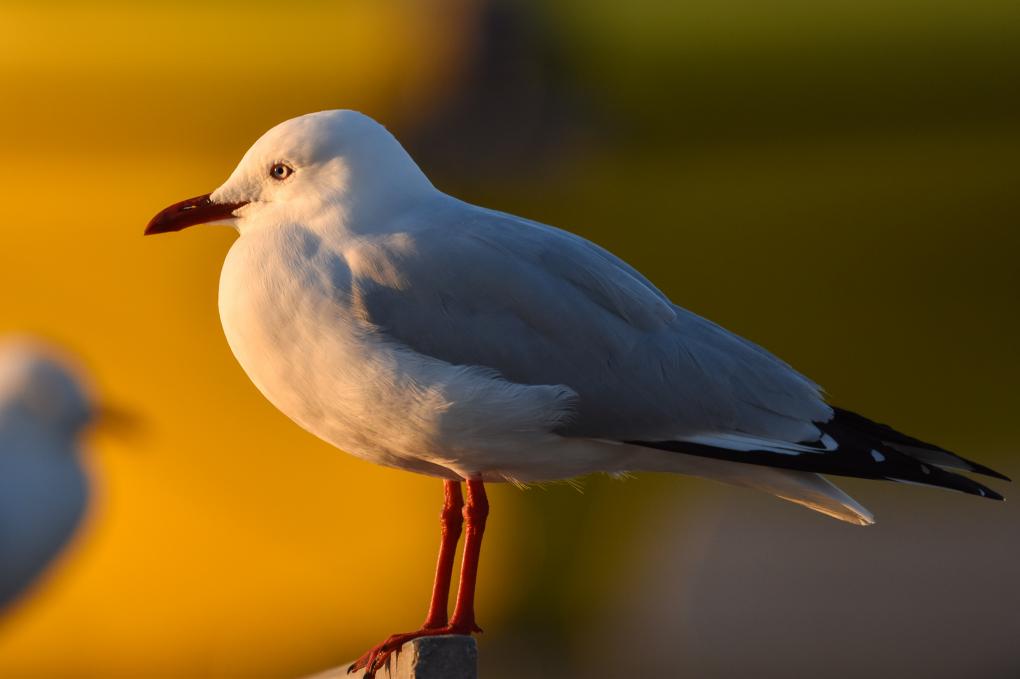

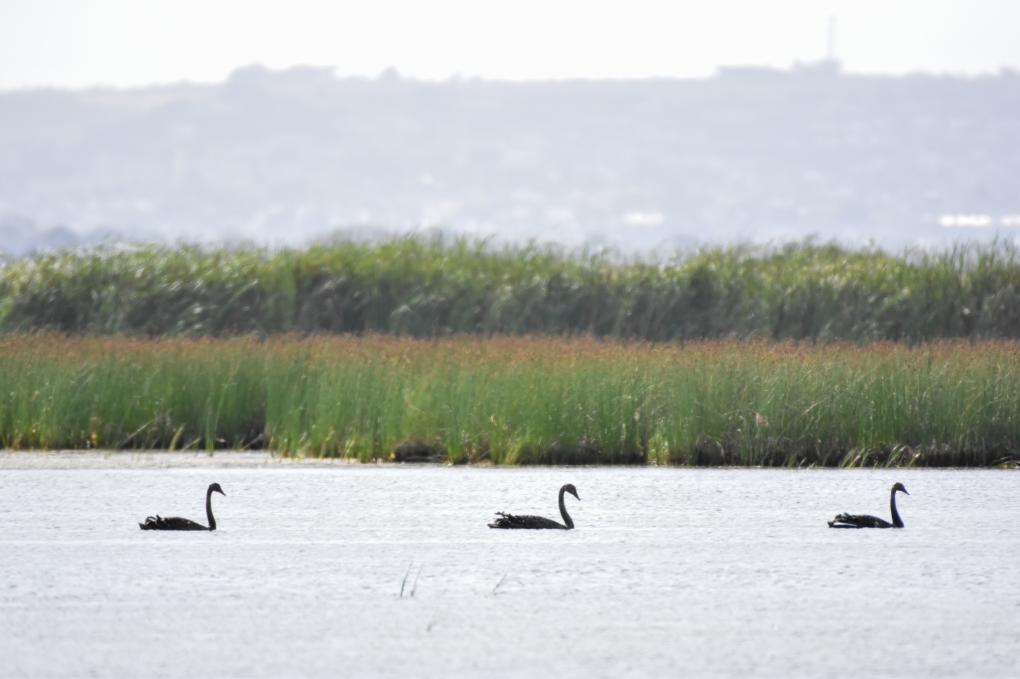
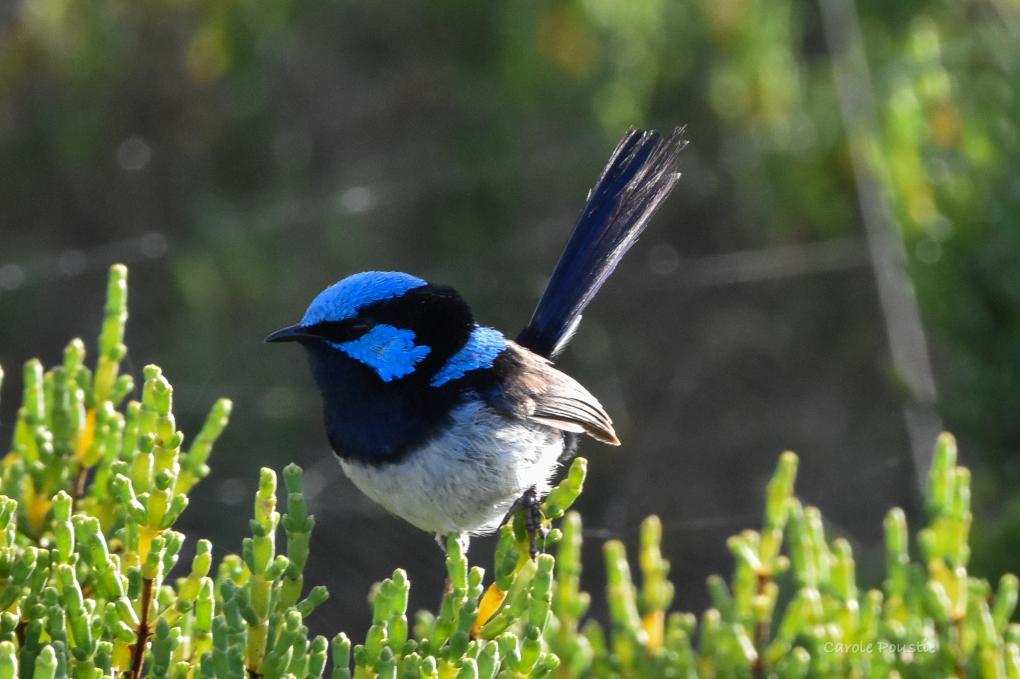
 I took this photo at 1/1250, f/6.3 with ISO 500. I also touched it up a bit in Lightroom.
I took this photo at 1/1250, f/6.3 with ISO 500. I also touched it up a bit in Lightroom. 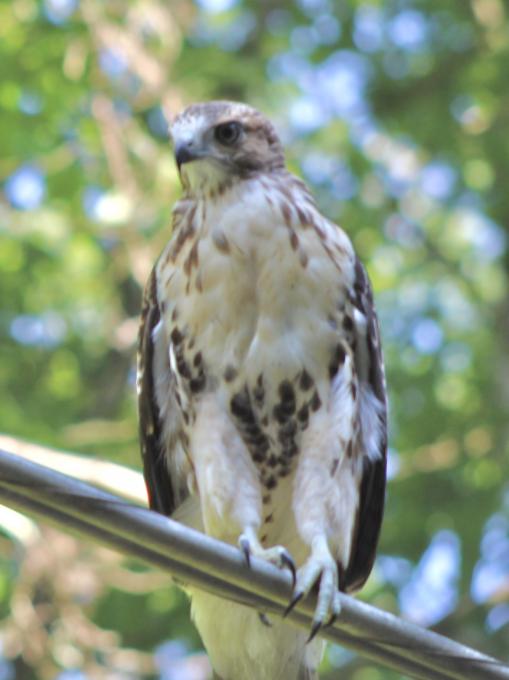

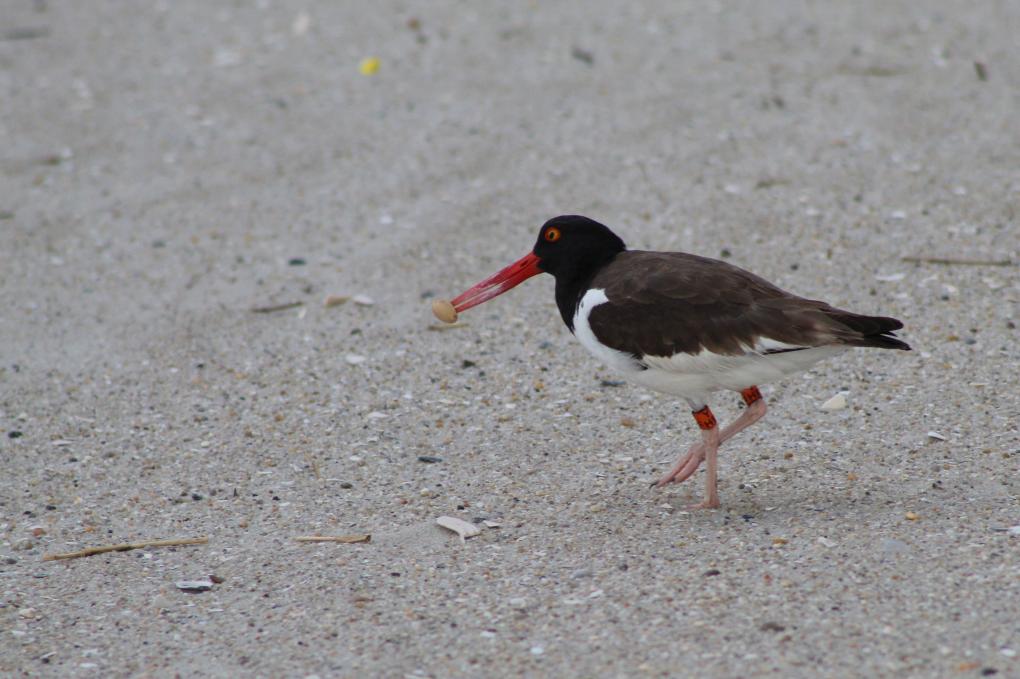 The picture of the American Oystercatcher, taken on my day trip pilgrimage to Cape May yesterday, follows the rule of thirds. The background is blurred in the Red-Tailed Hawk picture. For the Bald Eagle (taken on July 4th!), I broke the rule of thirds. The angle of the bird flying away, and the lack of anything but blue sky beyond it, made it look better to me this way. Fun fact, the Eagle and the Hawk (wasn’t that a John Denver song) were taken only 12 minutes apart, both using the car as a blind, sort of. The Eagle was too far away to care about me. I saw the hawk perched on a wire as I drove home from where I’d just seen the Eagle. The road was very lightly traveled at the time, so I was able to turn around, go back, stop underneath, and take the picture through the sunroof.
The picture of the American Oystercatcher, taken on my day trip pilgrimage to Cape May yesterday, follows the rule of thirds. The background is blurred in the Red-Tailed Hawk picture. For the Bald Eagle (taken on July 4th!), I broke the rule of thirds. The angle of the bird flying away, and the lack of anything but blue sky beyond it, made it look better to me this way. Fun fact, the Eagle and the Hawk (wasn’t that a John Denver song) were taken only 12 minutes apart, both using the car as a blind, sort of. The Eagle was too far away to care about me. I saw the hawk perched on a wire as I drove home from where I’d just seen the Eagle. The road was very lightly traveled at the time, so I was able to turn around, go back, stop underneath, and take the picture through the sunroof. 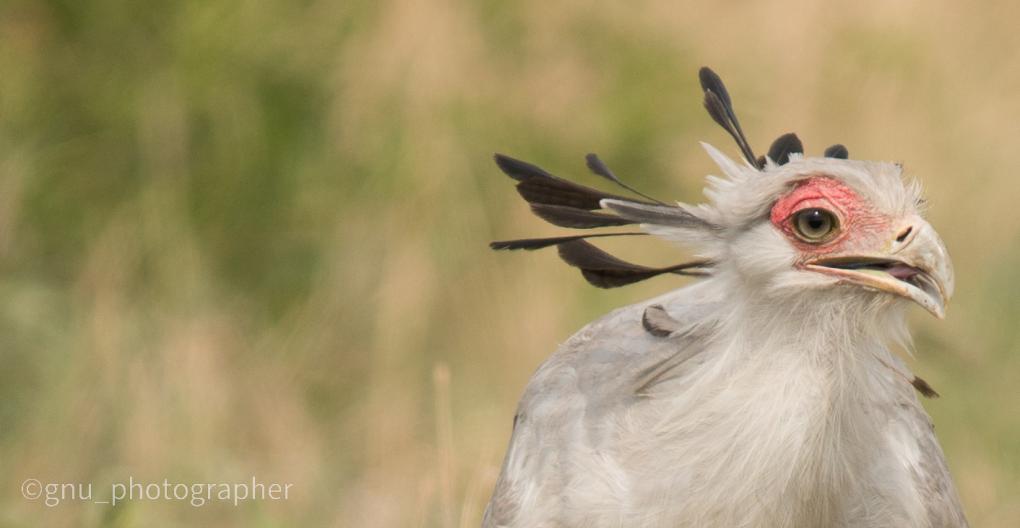 This is a photo in which I think I broke some of the rules. The photo of the Secretary Bird is taken with the negative space behind the bird rather than (the traditional) in front of the bird. I did this to emphasize the Secretary Bird's rearward facing plumes.
This is a photo in which I think I broke some of the rules. The photo of the Secretary Bird is taken with the negative space behind the bird rather than (the traditional) in front of the bird. I did this to emphasize the Secretary Bird's rearward facing plumes.
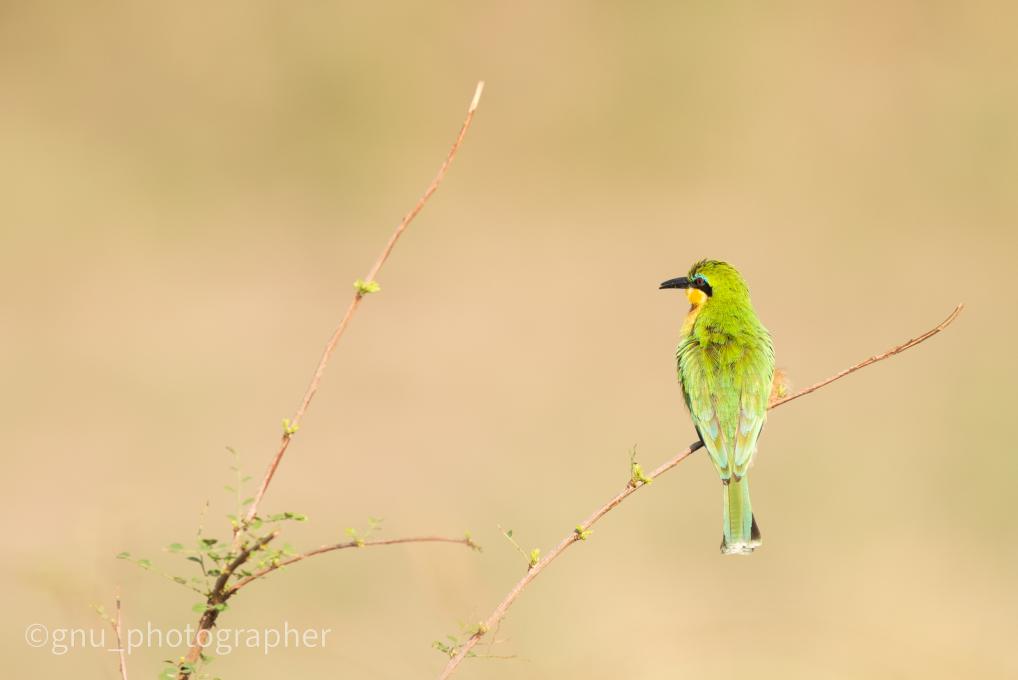 I think this Bee Eater photo is more in line with usual bird portrait rules, creamy background, rule of thirds. There is no catchlight in the eye but the iris is clear and evenly lit.
I think this Bee Eater photo is more in line with usual bird portrait rules, creamy background, rule of thirds. There is no catchlight in the eye but the iris is clear and evenly lit. 
